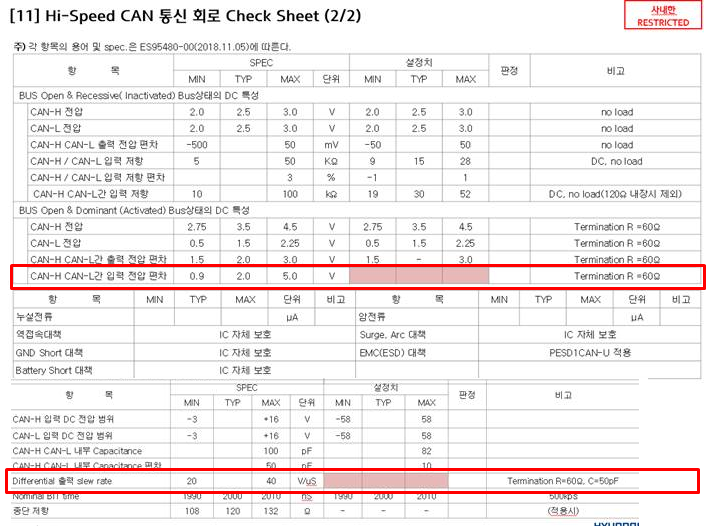Hi~
Customer want to check TCAN1042-Q1 below spec, but couldn't find in datasheet exactly.
1) CANH, CANL, input voltage tolerence (required spec : min 0.9, typ 2.0, max 5.0V, Rt=60ohm)
-> min , typ, max
2) CANH, CANL differential output slew rate (required spec : min 20, max 40V/uS, Rt=60ohm, C-50pF)
-> min, max
Would you please check above those spec?


